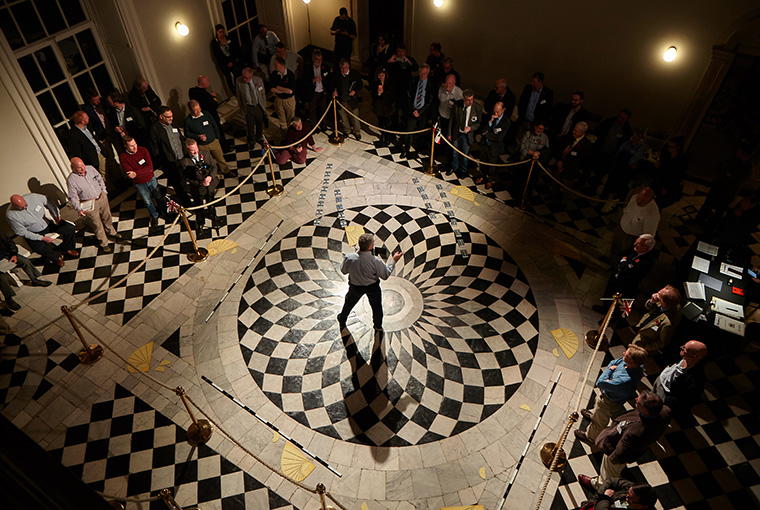Re-enacting the Battle of Jutland: U.S. Naval War College tackles lessons from a WWI sea battle

A U.S. Naval War College war game based on a much-studied World War I battle was held at the Queen’s House at the National Maritime Museum in Greenwich, U.K., on Nov. 8.
The participants included officials from U.S. Naval War College, which has long and historic ties to the 1916 Battle of Jutland.
The re-enactment employed the same methods and technology used a century ago to understand the maritime strategy of what was the largest naval surface engagement of World War I.
The battle was fought between Great Britain and Germany off the coast of Denmark, at the cost of nearly 10,000 lives.
The British broke German signal codes and made good use of ship-handling to force the German admiral into retreat. Both sides claimed victory, though Britain retained control of the disputed waters.
The encounter was studied closely between the two world wars at the Naval War College, including by luminaries such as Fleet Admirals Chester W. Nimitz, Ernest J. King and William F. Halsey. The lessons learned were the basis for much of the naval strategy used in World War II.
“The Battle of Jutland inspired U.S. Navy professionals to develop new tactics, techniques and procedures for exploiting the technical innovations of radio communications, naval aviation
and submarine operations,” said Rear Adm. Jeffrey Harley, Naval War College president.
“The lessons derived from the Battle of Jutland were critically important to the five-star admirals who won the Second World War,” said Harley, who attended the event.
The re-enactment was a valuable tool to reinforce the importance of emerging technologies and how to exploit them.
“British and German operations during the Battle of Jutland directly reflected the revolutionary influence of radio communications and intelligence,” said David Kohnen, director of the Hattendorf Historical Center at the Naval War College.
“For the British, ‘Room 40’, the U.K. Navy’s information analysis arm, provided indications and warnings of German fleet locations which provided a decisive advantage for the British,” said Kohnen, who helped arrange the re-enactment.
This month, the 100-year anniversary of World War I’s end, provides an important opportunity to highlight how the U.S. Navy used the battle as a learning tool, said Quintin Colville, senior curator of research at Royal Museums Greenwich.
“As part of our program to highlight the human costs and legacies of the war at sea, this is a remarkable opportunity for the National Maritime Museum to host experts from the U.S. Naval War College -- an institution that has advanced the strategic and tactical understanding of the Battle of Jutland since the 1920s,” Colville said.
“It is also very fitting that the Naval War College’s analysis of how American naval officers interpreted Jutland can be shown during these centenary commemorations.”
From the historical perspective, the Battle of Jutland inspired the U.S. Navy to gain a fresh approach to grand maritime strategy, Kohnen said.
“During the 1920s and the 1930s, they studied the battle in such detail that they were able to glean strategic, operational and tactical lessons that they were able to apply in the Second World War.”
The Battle of Jutland happened at a turning point in naval history, said Angus Ross, professor in the joint military operations department of the Naval War College’s College of Distance Education.
“World War I heralded a new age in Sea Power -- the industrial age, where victory was going to be determined more by economic domination as opposed to a purely Mahanian victory on the seas,” Ross said.
“Times had moved on and the meaning of sea control had widened considerably. The Royal Navy had formerly been the prime instrument of winning battles for Great Britain,” he said.
“You couldn’t just defeat a fleet of battleships at sea and expect that victory would be complete. That said, Britain couldn’t afford to ignore the Kaiser’s High seas fleet either.”
The U.K. National Maritime Museum, Naval History and Heritage Command, Naval War College Museum all supported the Jutland reenactment.
